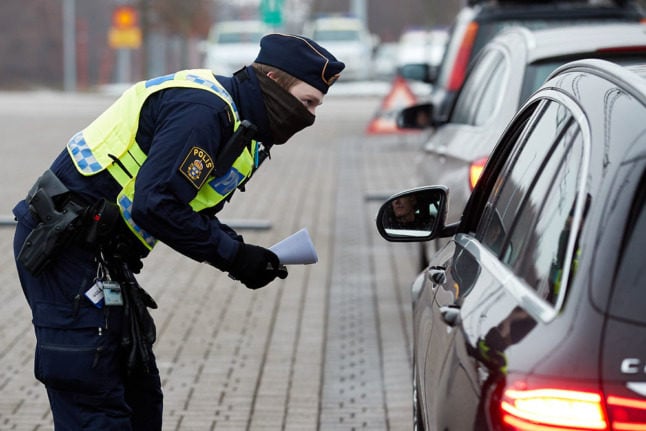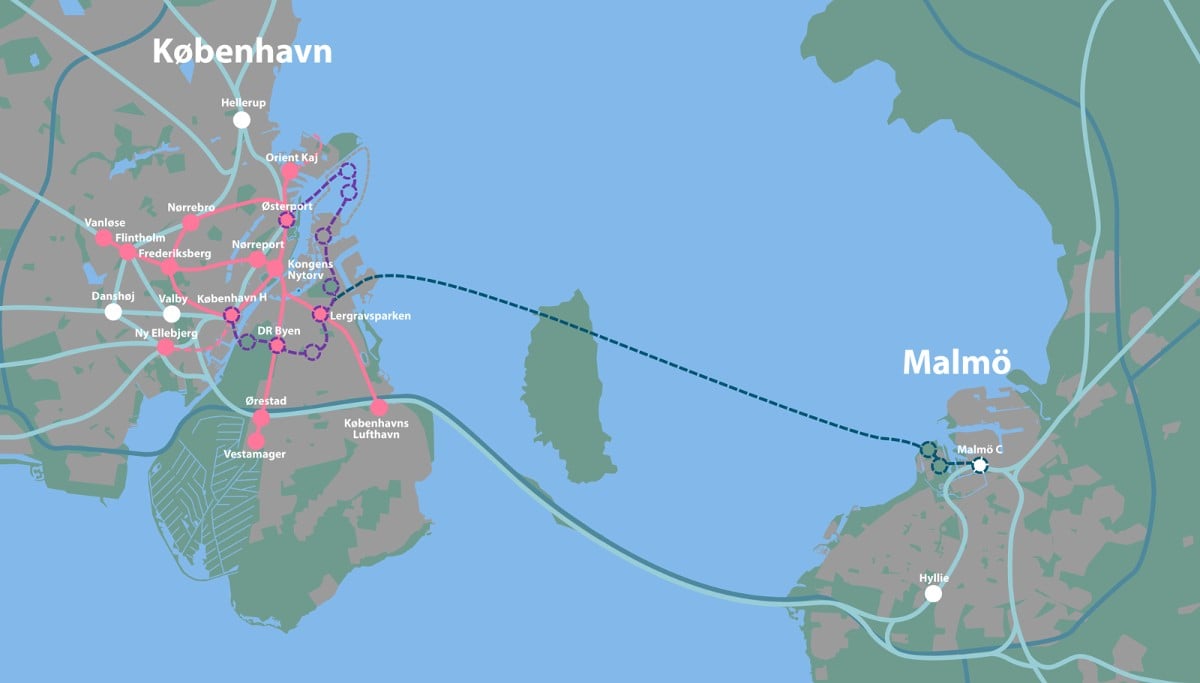Sweden’s Polisregion Syd, which conducts police control at the Öresund Bridge, Helsingborg and Ystad border points, confirmed the figure to Danish news wire Ritzau on Wednesday, as reported by broadcaster DR.
The border refusals are related to a new rule introduced by Sweden on December 28th requiring most travellers from Denmark to present a negative Covid-19 test at the border. The test must be no more than 48 hours old.
READ ALSO: Sweden implements new Covid-19 test rules for travel from Denmark
The Swedish police did not give exact details on the number of Danish citizens who were among the refusals, but said they constituted the “considerable majority”.
The 600 persons were refused entry between midnight on December 28th and 7am on Wednesday.
As of December 28th, many foreign travellers need to show a negative Covid test to be allowed to enter Sweden, regardless of whether or not they are fully vaccinated and regardless of which country they’re travelling from – non-EU, EU or any of the Nordic countries.
Swedish citizens and foreign residents who can prove they live in Sweden are among the categories of travellers who are exempt from showing a negative test.
People travelling from the EU, including Nordic countries Denmark, Norway, Finland and Iceland, need to show a negative test, regardless of vaccination status.
Meanwhile, Denmark’s own rules for entry testing also presented problems for travellers heading to Sweden on Wednesday.
Under rules introduced on December 27th, all travellers are required to test for Covid-19 in connection with arrival in Denmark. The rule applies to Danish citizens and residents as well as foreign visitors and applies regardless of vaccination status.
Residents of Denmark are permitted to take a test up to 24 hours after arrival, while people without an address in Denmark must take a Covid-19 test before entry to the Scandinavian country.
READ ALSO: Travellers returning to Denmark after Christmas must take Covid-19 test
A number of exceptions apply to the testing requirement, including children under the age of 15 and persons with addresses in border regions Schlesvig-Holstein (Germany) and Blekinge, Skåne, Halland and Västra Götaland (Sweden).
Travellers who transit through Denmark and stay for less than one day before leaving are likewise not required to test. This allows, for example, Swedish residents who travel through Copenhagen Airport before continuing their journeys overland to avoid the testing requirement.
The Local Sweden reporter Becky Waterton was not permitted to board her SAS flight from Manchester to Copenhagen on December 29th. SAS cited Denmark’s testing requirement and would not permit Waterton to board until she and her partner paid around 80 pounds to take Covid-19 tests at Manchester Airport.
When presented with official information showing Denmark’s entry testing rules, an airline staff member claimed the information was “not updated”, she said.
Waterton should have been exempted from the testing requirement because she was transiting through Denmark and leaving the country within 24 hours; and additionally because she resides in one of the border regions.
The exemptions for border residents and transit travellers are outlined on the websites of both the Danish Ministry of Health and the country’s Coronasmitte official information page for travellers.
Have you run into problems travelling to Denmark or Sweden as a result of the new restrictions? We’d be interested to hear from you if so — you’re welcome to get in touch with either The Local Sweden or The Local Denmark.




 Please whitelist us to continue reading.
Please whitelist us to continue reading.
Member comments